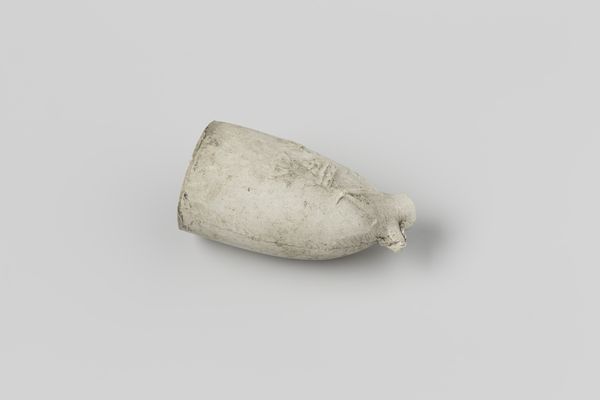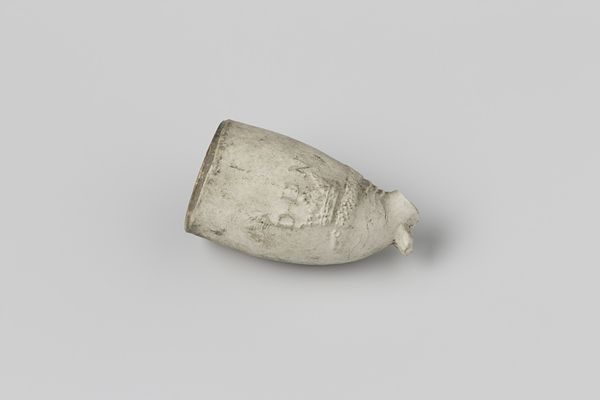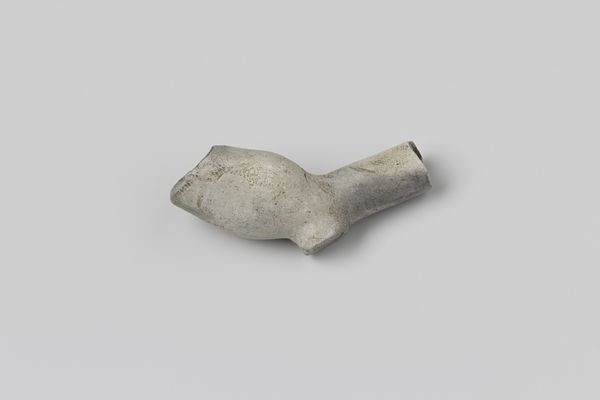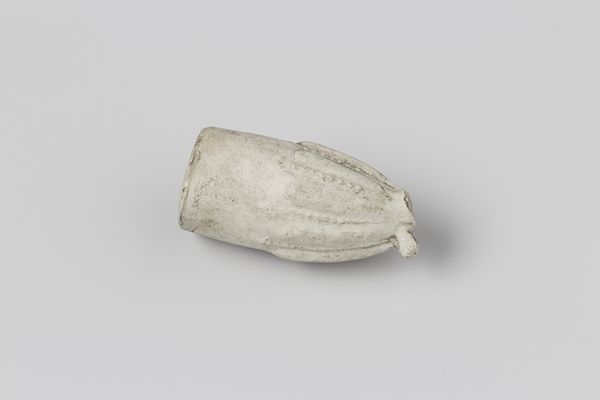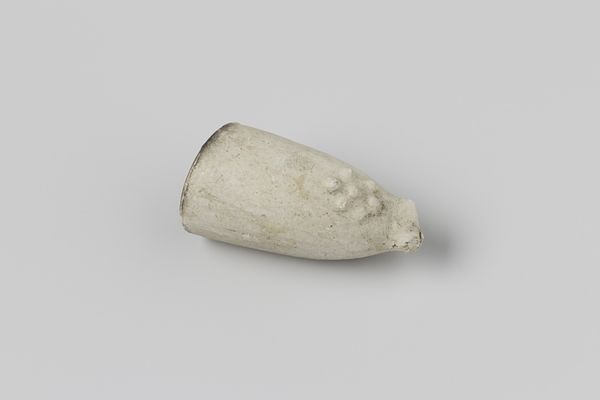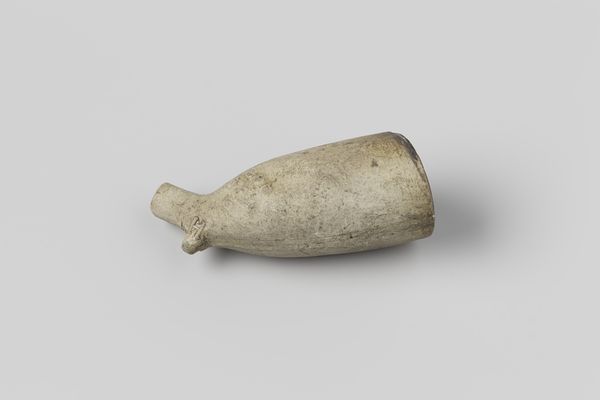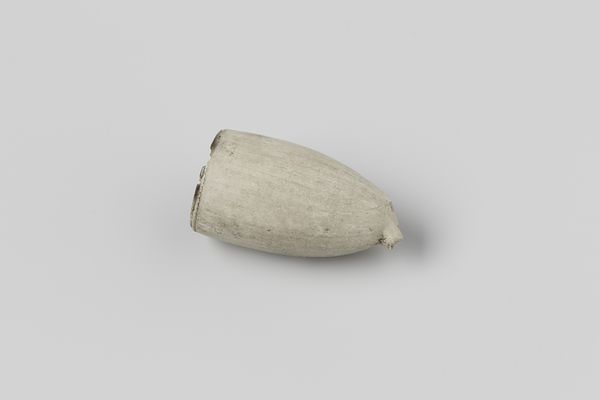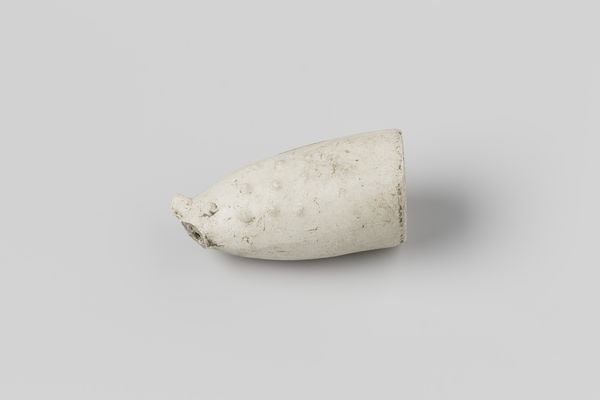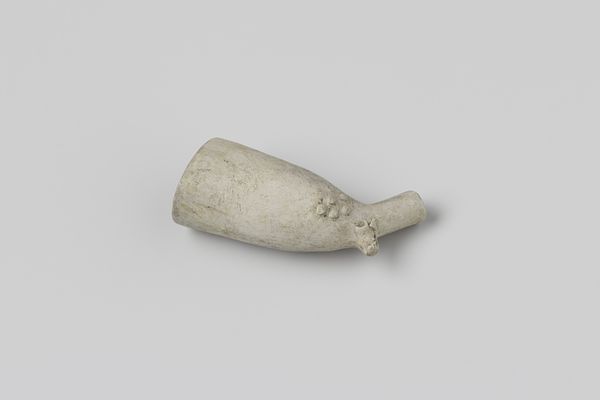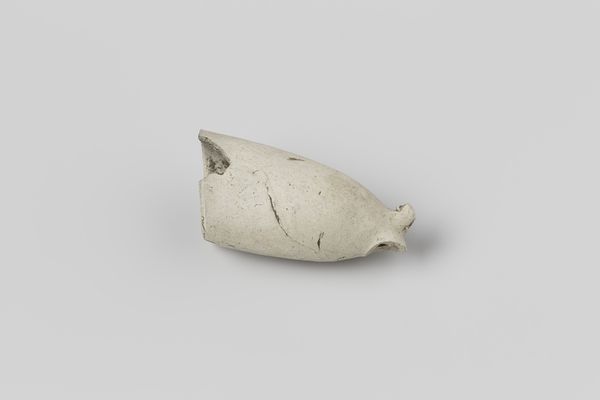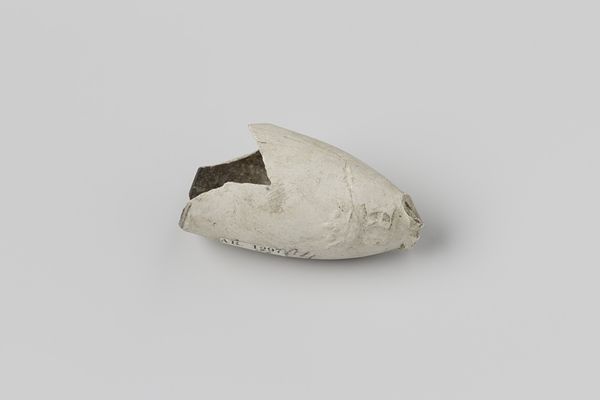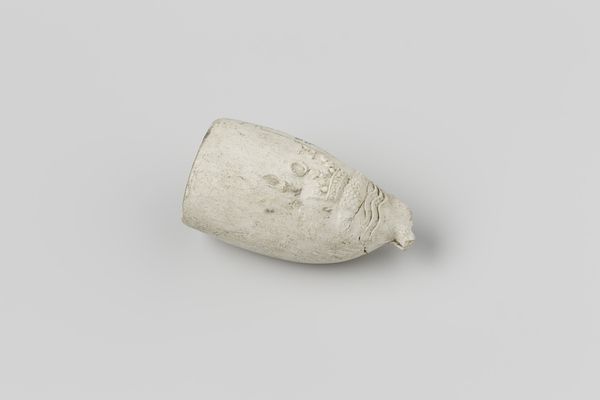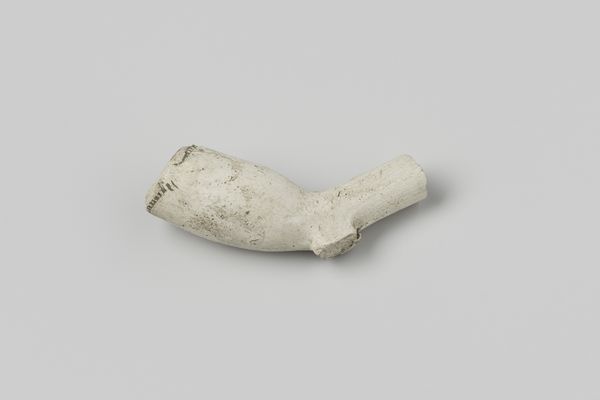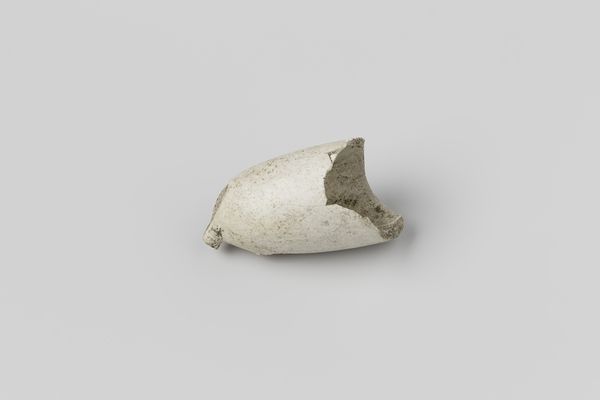
ceramic, sculpture
#
baroque
#
ceramic
#
form
#
sculpture
Dimensions: length 4.3 cm, width 1.8 cm
Copyright: Rijks Museum: Open Domain
Curator: Well, hello there. This object is entitled "Fragment pijpenkop," which translates to "Fragment pipe head," dating back to the early 18th century, 1720 to 1730. Editor: Right away, it whispers a feeling of incompleteness, a story cut short. You know? It’s like finding a seashell, worn smooth by the sea. But this has a stark, ghostly quality in comparison. Curator: Indeed. Crafted from ceramic, most likely by Jan Pietersz Schoonevelt, this broken smoking pipe is a remnant from the Baroque era, embodying a period known for ornate decoration. Although fractured, it reflects the stylistic tastes of its time. Editor: It’s funny. I see something almost primal in its shape. Like a tooth, a blunt claw, a fossil unearthed from some long-forgotten ritual. Curator: Intriguing interpretation. Tobacco pipes in the 18th century carried much symbolism. Often decorated with emblems or figures relating to trade, politics, or personal identity. As a commonplace article of consumption it’s quite loaded as an object for iconographic investigation, carrying economic weight as well as cultural currency. Editor: So this fragment would have originally represented something quite different. All these social underpinnings… And now all that remains is the pure geometry, the quiet melancholy of its aged surface, that suggestion of something lost. Like an abandoned ship. Curator: Very astute, considering the period. Pipe fragments are commonplace archaeological finds now and become suggestive of wider trends of a growing consumer economy dependent on international trade and colonialism. We are invited to reflect on the stories held within broken objects; in its day this piece stood as an emblem of Baroque tastes and burgeoning world trade. Now it prompts reflection about consumerism. Editor: Makes you wonder what future archaeologists will dig up from our time. And what stories they'll stitch together from our broken bits of culture. I really appreciate the contrast—from ornament to stark fragment, sign of a particular status now transformed into an evocative, almost universal shape. Curator: Exactly! Thank you for sharing your observations. Editor: Thanks! Always happy to dig into layers of history and feeling, and maybe unearth something unexpected!
Comments
No comments
Be the first to comment and join the conversation on the ultimate creative platform.
